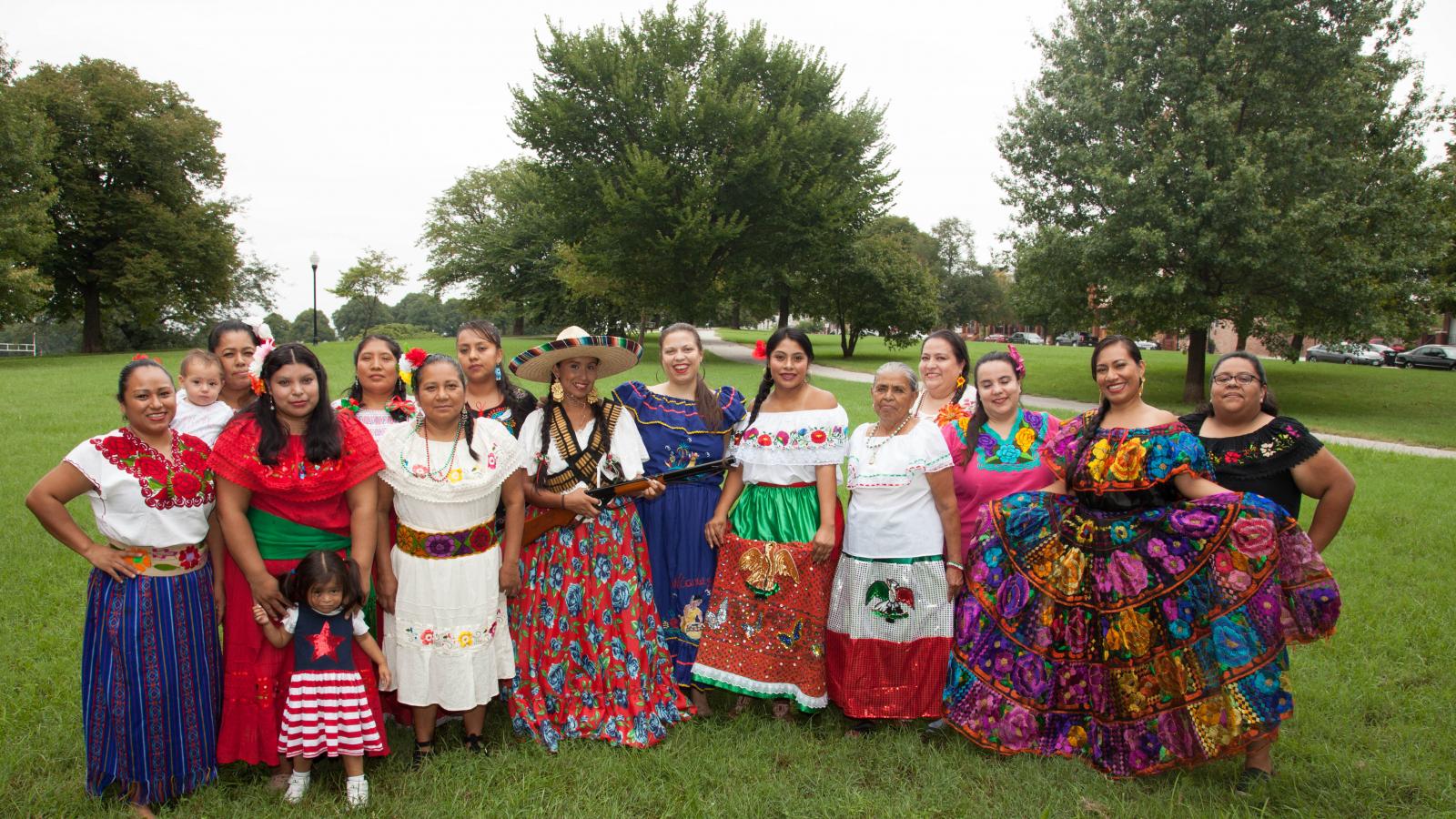Reconnecting with Culture with the Artesanas Mexicanas

A few years ago, when artist Maria Aldana was working with Baltimore residents to build a community altar for Día de los Muertos (Day of the Dead), a woman came in visibly excited to participate. “She said, ‘I used to make altars every year back home, but when I moved to the United States, I just stopped doing it and I don't know why,’” Aldana recalled. For the first time in five years, the woman participated in the centuries-old tradition that had shaped her life.
It’s one of the many stories of reconnecting with culture that Aldana has facilitated through Artesanas Mexicanas, which she founded in 2012 as a program of the Creative Alliance, a frequent NEA grantee. Comprised of 30 Latina women in Southeast Baltimore, the Artesanas Mexicanas practice and teach artistic traditions of Latin America, with a special focus on making piñatas, constructing altars for Día de los Muertos, and performing posadas, or community reenactments of Mary and Joseph’s search for lodging, which take place in the days leading up to Christmas.
For Aldana, the education director for Creative Alliance, upholding traditional art forms is “about having a sense of belonging,” she said. “Immigrants face a lot of challenges. Without having a family here, with being uprooted, you have to re-root yourself for your sanity and for your family.”
To strengthen the sustainability of these roots, the Artesanas Mexicanas offers a 12-month apprenticeship program, supported by the NEA. The program pairs master artists with apprentices to learn about and carry on traditional methods of piñata-making, paper cutting, corn husk flower-making, altar-making, and other art forms. Apprentices also learn how to market their wares as a way to generate income and raise visibility for their craft.
For both master artists and apprentices, the ultimate goal is “sustaining their traditions and trying to replicate what they experienced as a child for children here in the United States,” said Aldana. Children, of course, might have few if any memories of their home country, and typically face additional pressures from their peers to assimilate. To further counteract this, the group has also launched a new program called Artesanitos, or little artists, which coaches children of the Artesanas Mexicanas on how to teach the traditional arts to their peers. The goal is that these young members will be able to lead their own workshops by next summer.
“We’re doing this to pass [the arts] on to children so that they're actively engaged in their culture, and so they don't forget where they come from,” said Aldana. Seeing a parent thrive in their community through the arts, and learning traditional art forms from them, allows children to see “that there's a richness in who they are, and that they have the power to encourage other people to find that cultural legacy within themselves. It's really beautiful to have that opportunity,” Aldana said.
The Artesanas Mexicanas also seek to share this richness beyond the Latino community. “Through cultural programs, we've been able to be a part of schools and share our culture, share our language, and be able to have honest conversations with children about well, why do we talk differently and how come we're not speaking English? Why is that?” said Aldana. “[We’re able to] have an open conversation so that the fear is eliminated on both sides—because there's a strong fear there.” All of the group’s programming is open to the wider Baltimore community, and the Artesanas Mexicanas have been invited to speak and conduct artist residencies at local institutions such as Towson University, the Maryland Institute College of Art, Morgan State University, and others.
“It shows that there's a demand and an appreciation for Latin American heritage and arts,” said Aldana. “People have been incredibly receptive, and that's why the program has been so successful. If it was to stay within the Latino community, it wouldn't be as visible and it wouldn't be as rewarding.”




